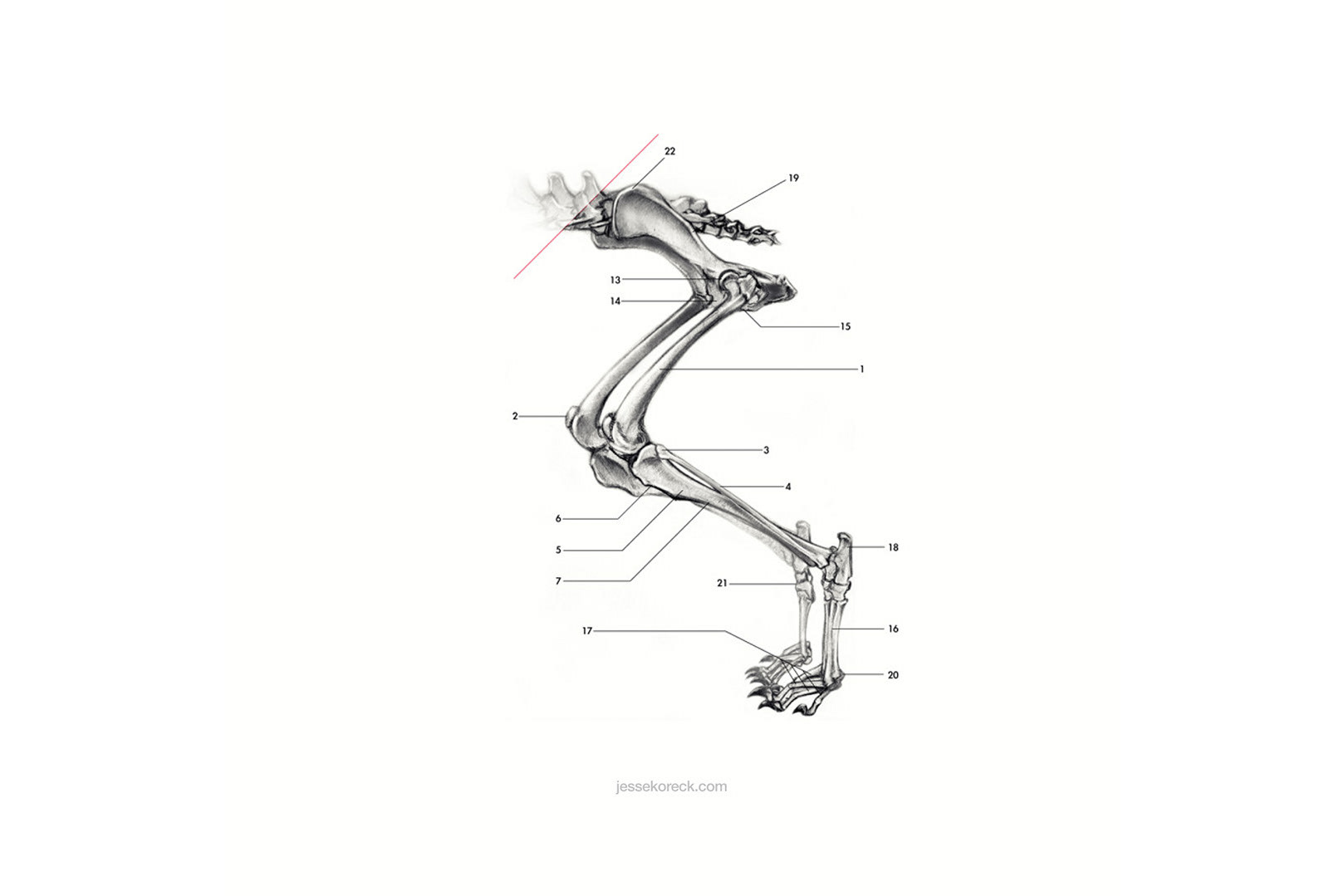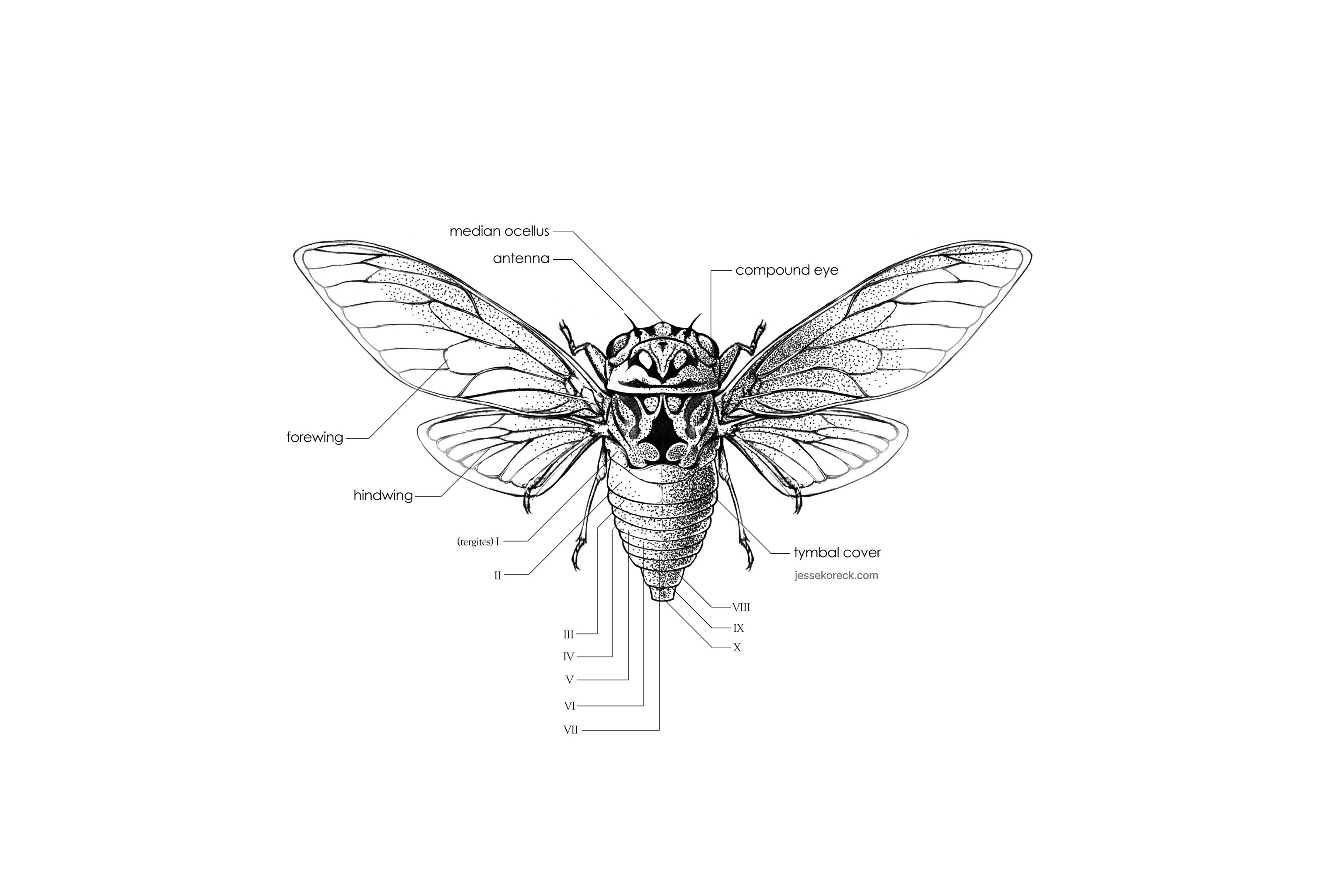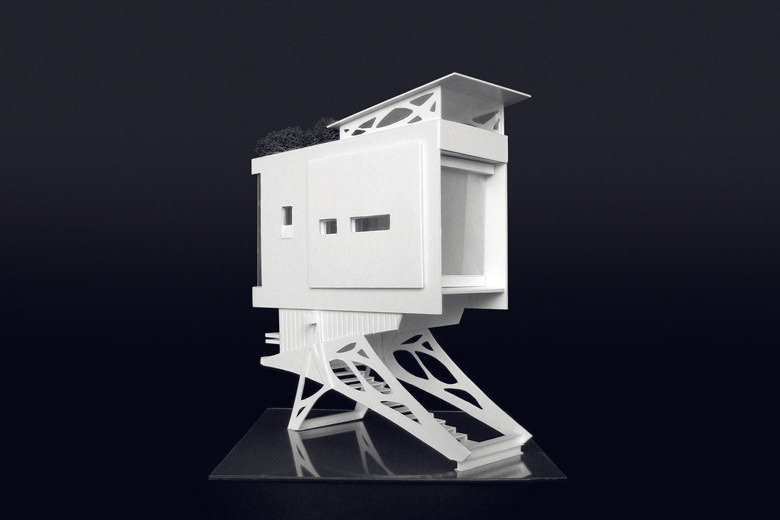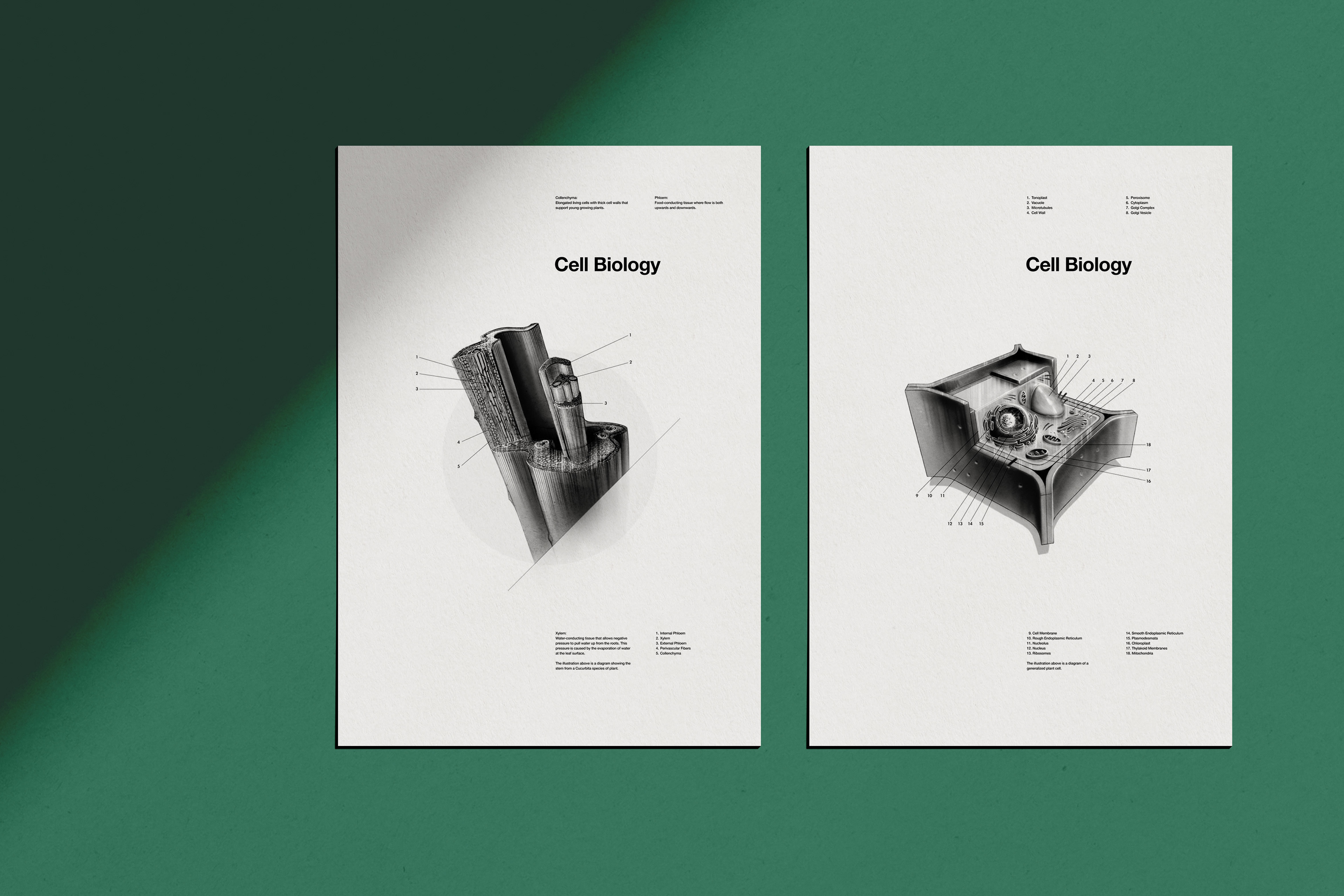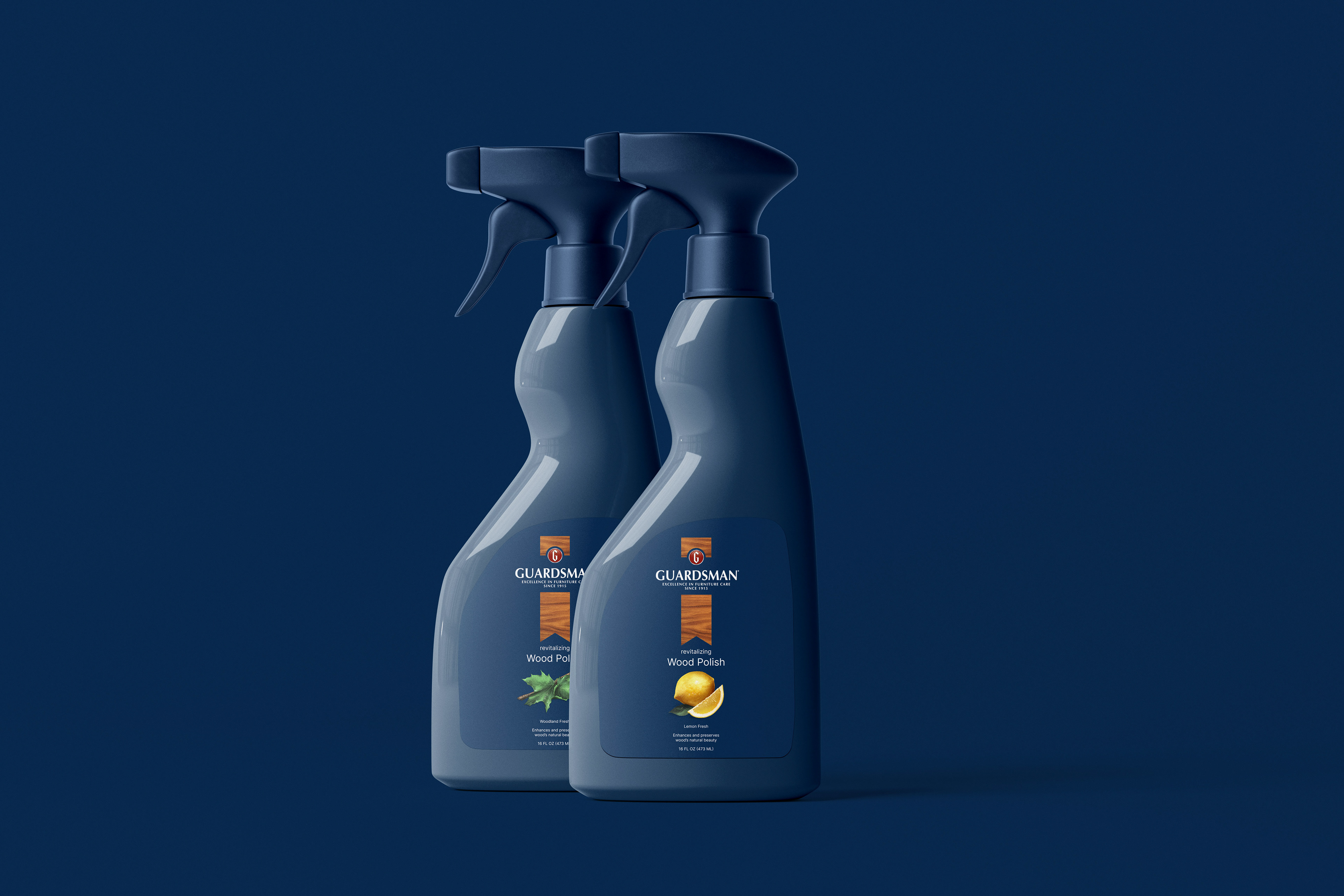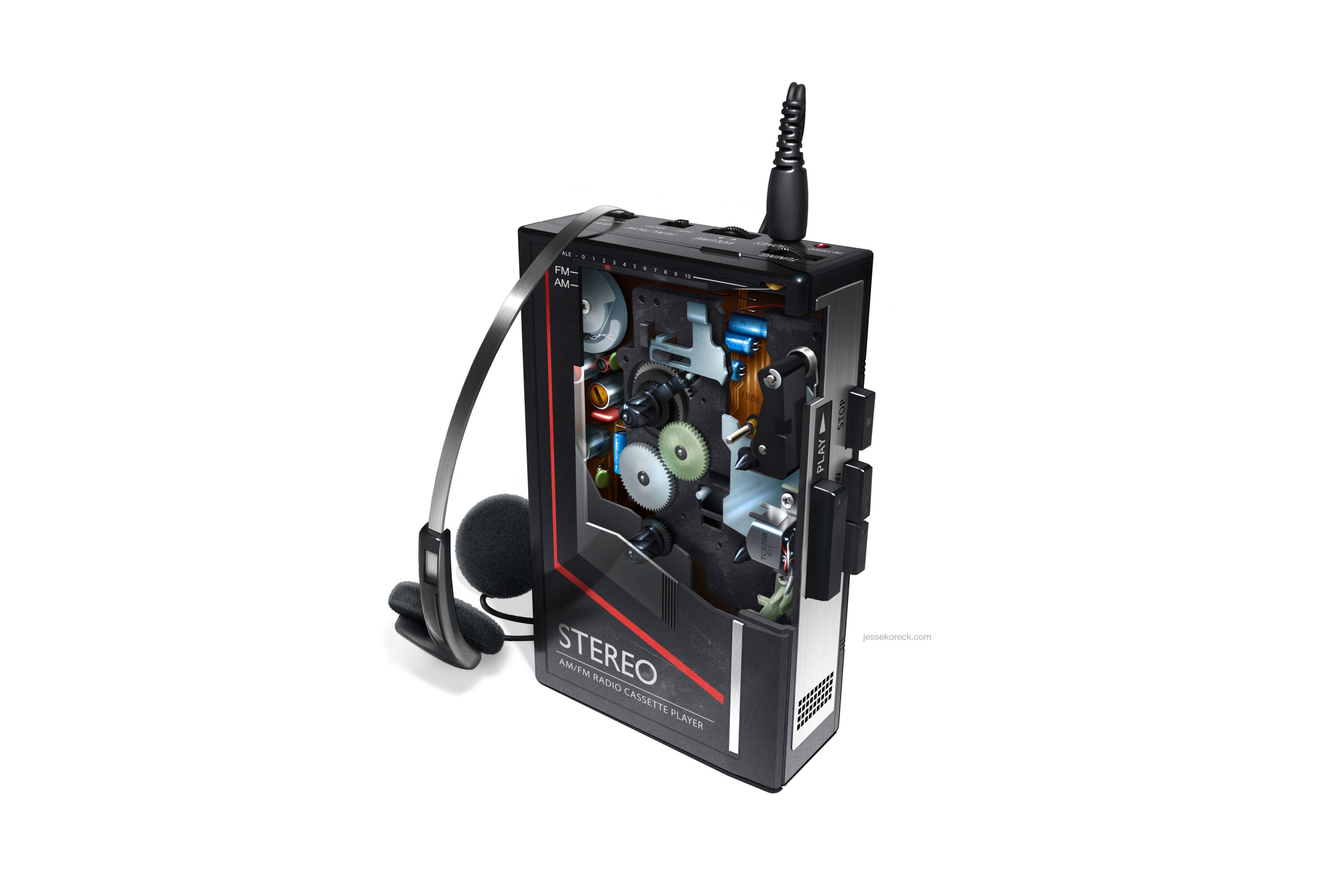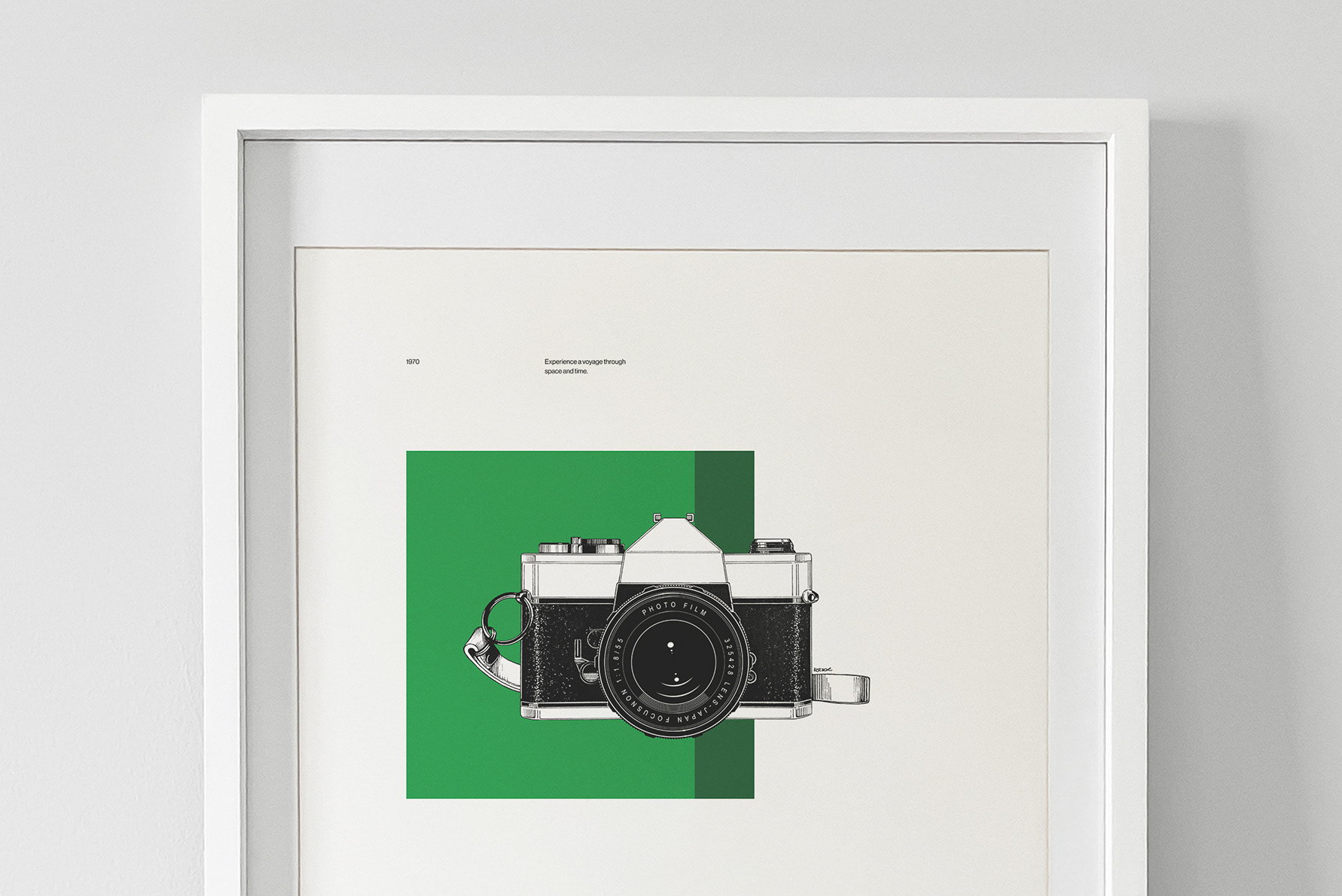The Result.
The result was a rectangular shaped table which is angled from the wall at one end and tapered at the other. A small drawer is found facing the hallway and is accessed by pulling on the bent metal handle. The handle relates to the angled metal that can be found on the underside of the table that can be used for temporary storage. The drawer pull relates to the bent metal under the table through its material choice and continuation of angles. The drawer is large enough to hold cell phones, wallets etc., and is angled towards the hall to make it easier to access these items as one is leaving the home.
Materials.
The table is made by applying a cherry veneer to the formaldehyde free ply-wood which is then used to create a hollow box. Solid cherrywood is then attached to the front and side of the table body. This allows for keys to attached to the backside of the table used in wall mounting.
The metal used for the drawer and mail storage is cold rolled eighteen gauge steel. The steel is first tapped in appropriate places to allow for it to be connected to underside of the table. The same process is repeated to allow for the drawer to be attached to the drawer face. The metal is then bent on a break to the desired angles and covered in a natural beeswax finish.
The drawer is made from solid wood and cherry veneer plywood. The drawer bottom is made from plywood as to accommodate wood movement. The drawer front is solid wood to withstand heavy use overtime. The slides are also made from cherry wood and are covered in beeswax.

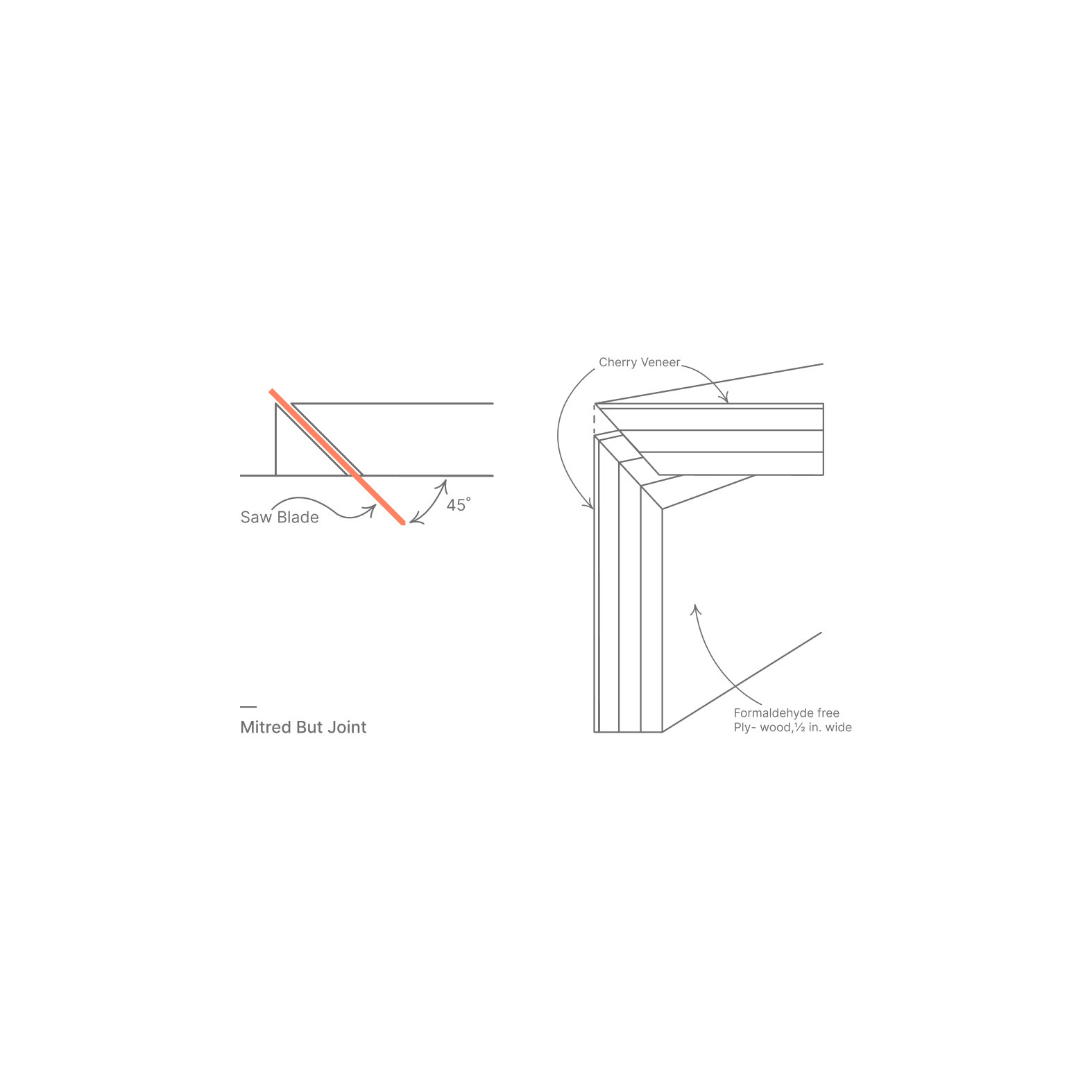
Mitred But Joint.
Commonly used for picture frames and light furniture design, the mitre but joint makes a neat right-angle corner without visible end grain. Cutting wood at a 45 degree produces a relatively large surface area of tangential cut grain that glues well. For light-weight construction, just add glue and set the joint in a mitre clamp. The easiest way to reinforce a mitred joint is to glue the joint first and add the reinforcement when set. Drive panel pins flush flush with the wood, then punch the heads below the surface using a nail set.
